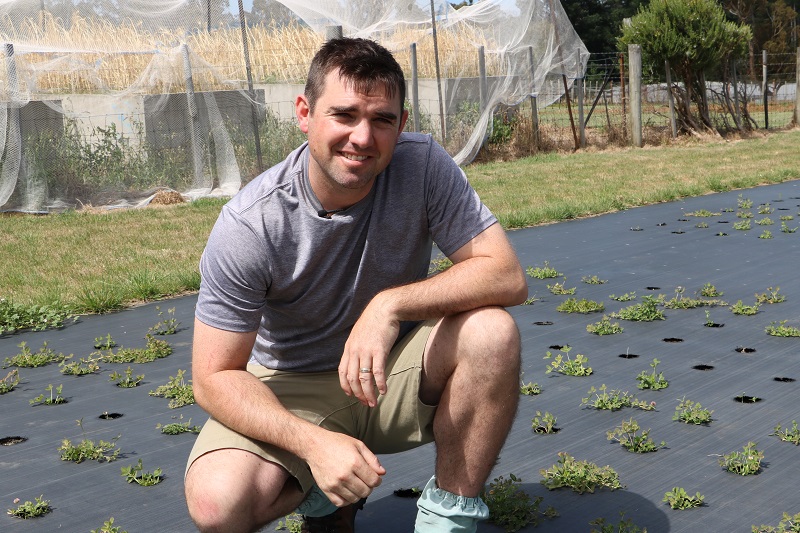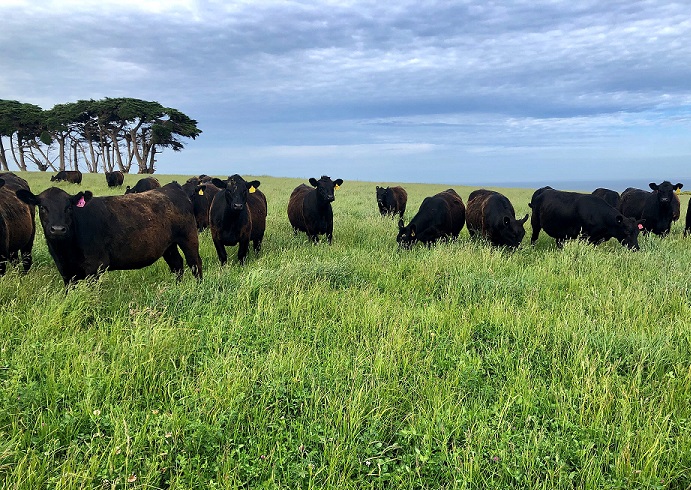Project details
Status: Current
At a glance
- $1.5 million research project to enhance the legume component of pastures.
- Region-focused approach to improve the proportion of legumes in the North West Coast and Tasmanian Midlands.
- The project will trial different species, test new sowing practices and investigate how to effectively re-establish legumes in grass dominant pastures.
This $1.5 million research project aims to enhance the legume component of pastures, improving productivity and resilience for Tasmanian red meat producers.
The five-year project, led by Tasmanian Institute of Agriculture (TIA) Research Fellow, Dr Rowan Smith, will help grow productivity in the red meat industry by identifying and establishing perennial legume species that can successfully persist to fill feed gaps and improve tolerance and productivity under waterlogging.
The project will take a region-focused approach to improve the proportion of legumes in the high rainfall regions of the North West Coast and low-medium rainfall region of the Tasmanian Midlands.

The need for legumes
The current low proportion of legumes in Tasmania pastures are limiting the profitability and productivity of the Tasmanian red meat industry.
The Tasmanian Midlands has seen recent transformational irrigation developments that have allowed the finishing of lambs in a traditionally wool and lamb sourcing region. However, only around 10 per cent of the area is irrigated and there is significant potential to improve the surrounding dryland grazing country to increase stocking rates.
Legumes are known for driving the animal production system by bringing in a quality aspect to the feed base.
By successfully establishing perennial legumes, producers can extend their growing seasons beyond what is currently being achieved and enhance the resilience of their feedbase to the changing and variable climate.

What will be trialled?
The project will trial different species and test how new sowing practices could advantage legumes during establishment.
The team will be looking at what techniques can help establish pastures with optimal legume content in order to improve the quality of pasture for longer into the growing season.
They will also investigate how to effectively re-establish legumes in grass dominant pastures, potentially removing the need and risk of a full pasture renovation.
Working with industry
The team will work closely with local red meat producers to ensure the findings are relevant and valuable.
Tasmanian producer Simon Foster owns Fosterville Pastoral, a mixed farming business west of Campbell Town, and said maintaining the legume component in his pastures was an ongoing challenge.
“I really noticed the issue 12-13 years ago when I started to look at the species mix in our pastures,” Mr Foster said.
“We really need this research to give us practical and cost-effective ways to re-establish the legumes.
“Increasing the legume component in our pastures will absolutely increase the productivity and profitability of our grazing business.”
Related resources
Browse fact sheets and project updates below.
- Project Update: Growing red meat productivity through perennial legumes - North West_ Nov 2023 (PDF File, 929.9 KB)
- Project Update: Growing red meat productivity through perennial legumes - North West_ Nov_2022
- Project Update: Growing red meat productivity through the selection and establishment of perennial legumes_Dec 2021
Related stories
For more information contact:
Acknowledgements:
The project is funded by Meat and Livestock Australia (MLA) and Tasmanian Institute of Agriculture (TIA) and is part of the Livestock Productivity Partnership.
The Livestock Productivity Partnership (LPP) is a collaborative research and development partnership involving MLA Donor Company (MDC), TIA, NSW Department of Primary Industries, University of New England, University of Melbourne, and CSIRO, aimed at boosting livestock productivity and developing new R&D capacity.